How Long Does a Cat Hold a Grudge? Signs that Cat Is Angry
Understand feline behavior and learn how long a cat holds a grudge. Discover signs of cat anger and the nuances of their emotional memory.
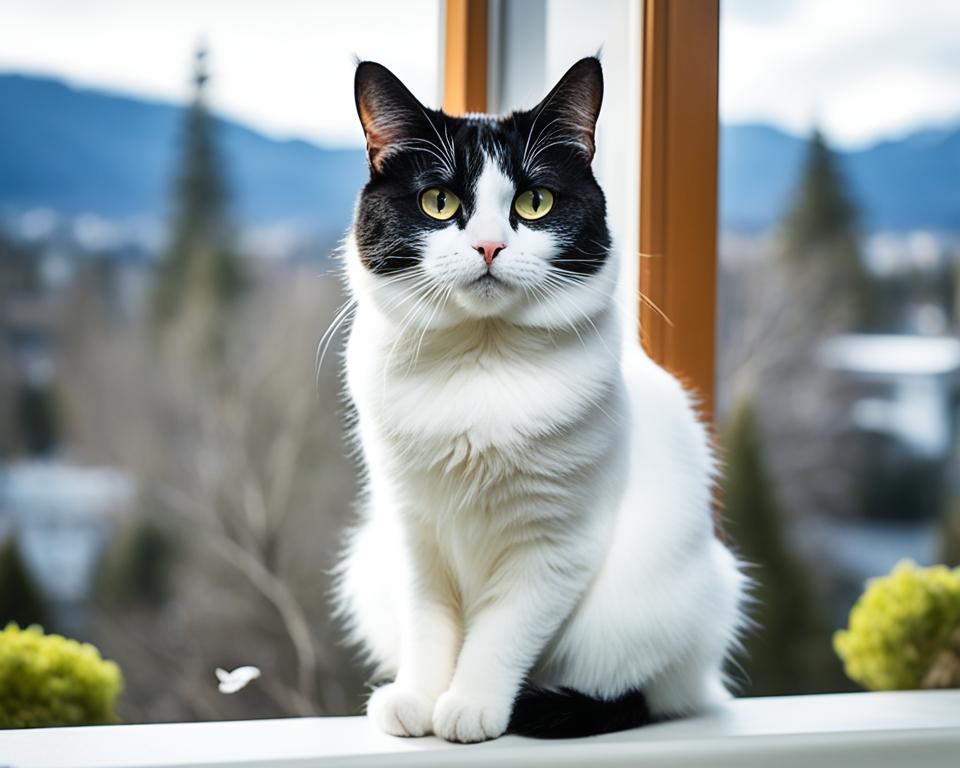
Have you ever wondered if your feline friend is still simmering over that time you accidentally stepped on their tail, or does that memory fade after a nap and some treats? Understanding cat behavior grudges can offer insights into the complexities of their emotions and help avert future conflicts.
Cats have a short-term memory that lasts around 16 hours, but traumatic events may embed in their long-term memory, impacting their behavior for years. Despite their cognitive limits, signs like flattened ears, squishing tails, hissing, growling, swatting, and inappropriate elimination reveal their irritation. Recognizing these indicators and addressing cat grudge duration is crucial for resolving cat conflict.
To restore peace and foster forgiveness, it’s important to connect through their love language, whether it’s treats or cuddles. This approach helps alleviate any lasting pet grudge duration, ensuring a harmonious co-existence.
Understanding Cat Emotions and Behavior
Understanding the intricate landscape of cat emotions is essential for pet owners seeking to navigate the complex world of feline psychology. Cats, much like humans, form emotional memories that can influence their behavior and reactions over time. These emotional nuances can have a lasting impact on their well-being.
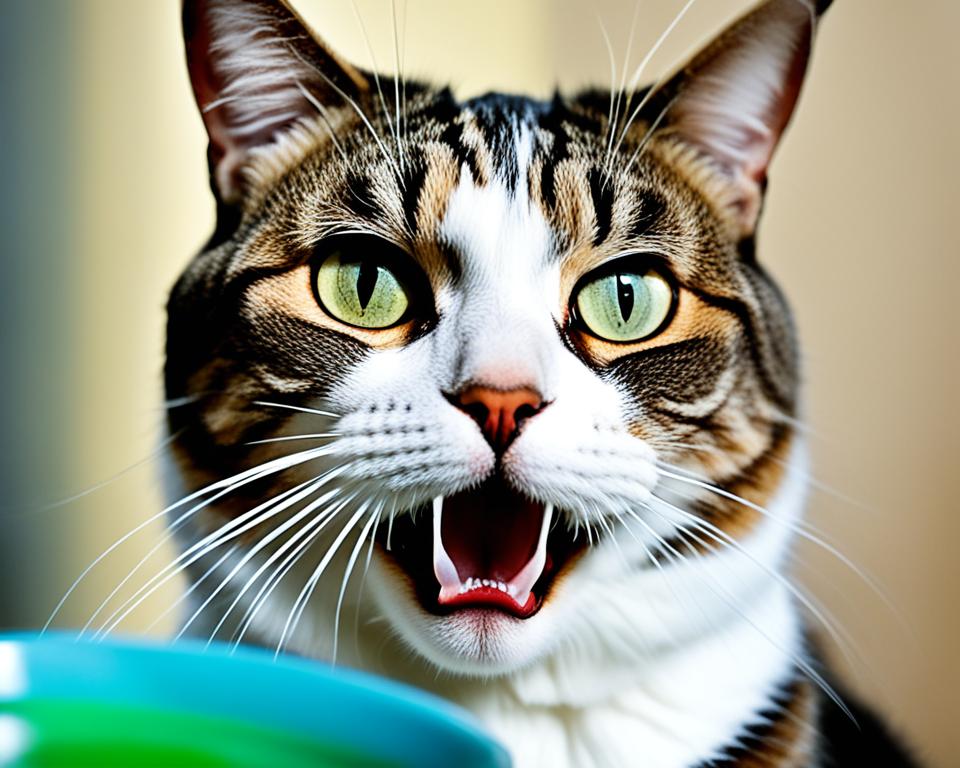
Feline Emotional Memory
Feline emotional memory is an astounding aspect of cat psychology. Unlike short-term memory, which lasts for a brief period, emotional memories can be retained for a lifetime. This deep-seated memory plays a pivotal role in shaping a cat’s behavior towards grudges and ensuring that past traumas influence their current responses. Recognizing the effect of these lasting memories can help in managing cat emotions more effectively.
Common Triggers for Cat Anger
Certain triggers can lead to cat behavior towards grudges and display of anger, such as disruptions in their environment or encroachments on their personal space. Understanding these common provocations is crucial in navigating feline animosity persistence. By identifying and mitigating these triggers, pet owners can effectively reduce negative associations and foster a more harmonious relationship with their cats.
How Long Does a Cat Hold a Grudge?
Understanding how long a cat may hold a grudge requires delving into their memory capabilities. Cats have both short-term and long-term memories that affect their behavior and interactions. The feline memory span for short-term events typically lasts about 16 hours.
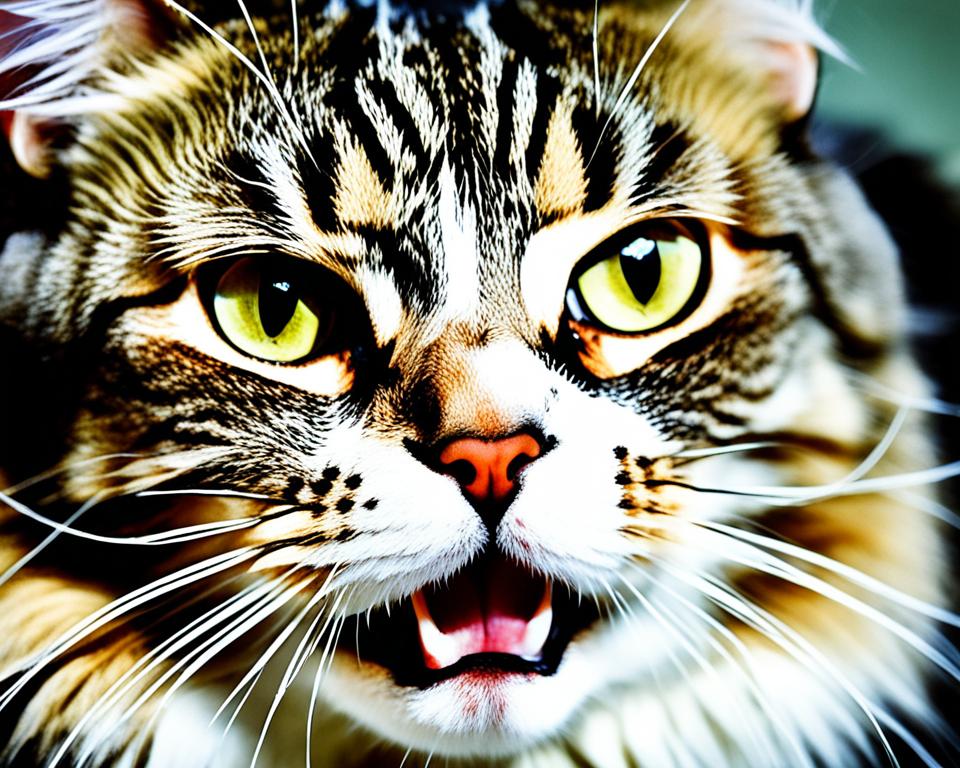
Short-term vs Long-term Memory in Cats
Cats are capable of retaining significant events in their long-term memory, which could last for years. This means that experiences involving trauma or distress can lead to long-lasting pet resentments. While minor annoyances may be forgotten quickly, pivotal events impact their long-term behavior and their interactions with humans.
Factors Influencing Grudge Duration
The duration of cat anger can vary based on several factors such as the cat’s individual temperament, past experiences, and specific breed characteristics. A cat with a more sensitive temperament might hold onto negative experiences longer, thus extending the cat forgiveness period. Additionally, the severity of the event and how often it occurs will also play a crucial role in determining how long a cat’s behavior grudges persist.
Recognizing these elements can help in understanding the intricacies of feline memory span and how it affects the duration of cat anger.
Signs That Your Cat Is Angry
Detecting feline anger is crucial for maintaining a harmonious relationship with your pet. Understanding the subtle and not-so-subtle signals can help mitigate cat mood persistence and address pet grudges before they escalate.
Body Language Indicators
Observing body language is one of the most immediate ways to identify signs that your cat is angry. Look for flattened ears, a fluffed-up tail, and an arched back. These are clear indicators of displeasure. Tail movements, like rapid flicking, also signify irritation.
Vocal Signs of Cat Anger
Vocal expressions play a significant role in detecting feline anger. Hissing, growling, and even yowling are vocal signs of cat anger that shouldn’t be ignored. These sounds are the cat’s way of communicating its displeasure and serve as warnings.
Behavioral Changes to Watch For
Behavioral shifts are another key aspect to watch. If your cat starts staring, hiding, shows reduced interaction, or becomes aggressive, these could be signs of prolonged resentment, or pet grudges. Such changes in cat behavior should be addressed promptly to prevent long-term damage to your bond.
Recognizing these telltale signs will not only help in understanding cat behavior but also in addressing the underlying issues effectively. By doing so, you can foster a more nurturing environment and improve your relationship with your feline friend.
How Memory Affects Cat Grudges?
The complex interplay between a cat’s working memory and its short-term and long-term memory significantly impacts its ability to remember and react to past events. This cognitive framework underlies a cat’s learning processes and its behavioral responses to various stimuli.
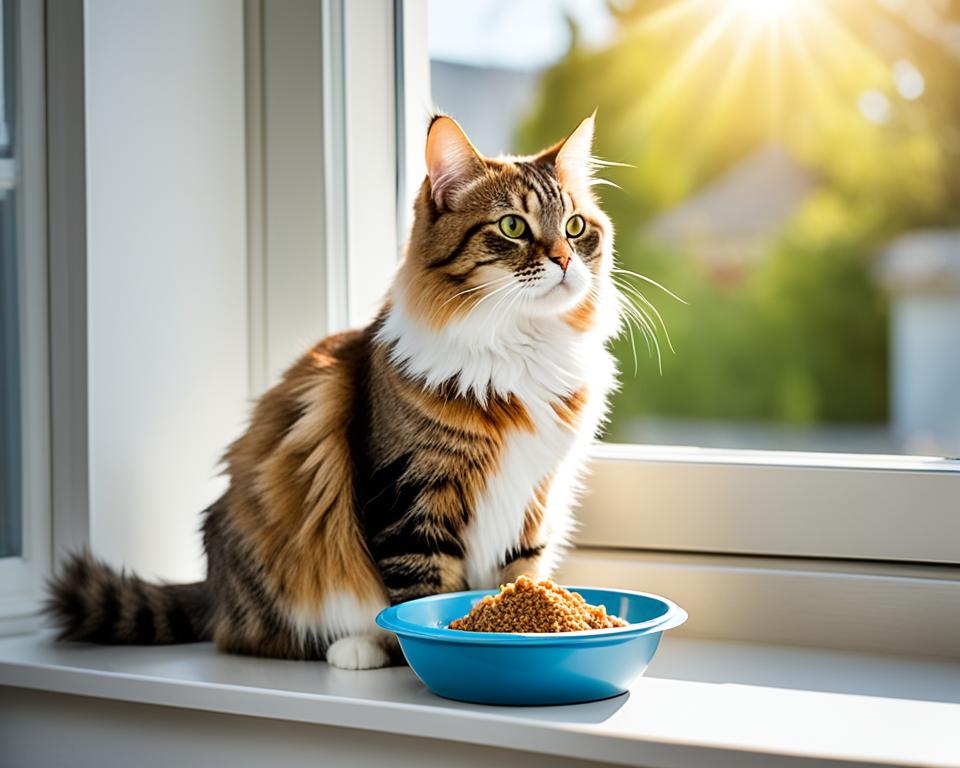
Understanding cat emotions towards past events is essential when deciphering signs of grudges. A cat’s short-term memory lasts approximately 16 hours, but they also possess a robust long-term memory. Unpleasant experiences, particularly those of an intense nature, can become deeply embedded in a cat’s long-term memory, subsequently influencing its ongoing reactions and behavior.
This capacity for long-lasting memory means that a cat’s responses to previous offenders or specific situations can persist over considerable periods. The animal resentment time frame can vary depending on the severity and nature of the event. Notably, feline behavior often reflects the complexity of these memories, which can manifest as avoidance, aggression, or anxiety.
“Research indicates that a cat’s memory plays a pivotal role in how it holds grudges. Recognizing and mitigating these emotional imprints is crucial for improving interactions and reducing negative behavioral outcomes.“
Steps to Calm an Upset Cat
Creating a serene environment is essential when addressing cat distress. Initiate by ensuring a quiet, stable space for your feline friend, as this is crucial for resolving cat conflict. Avoid forcing interactions, as cats need their autonomy to feel secure.
Preparing their preferred cat food can be a great way to provide comfort. Allow them the space and time to approach on their terms. This passive approach can be highly effective and is one of the fundamental calming techniques for cats.
Soothing speech and gentle play sessions can also significantly help in how to soothe an angry cat. These activities not only serve as a distraction but also rebuild trust and foster a positive association.
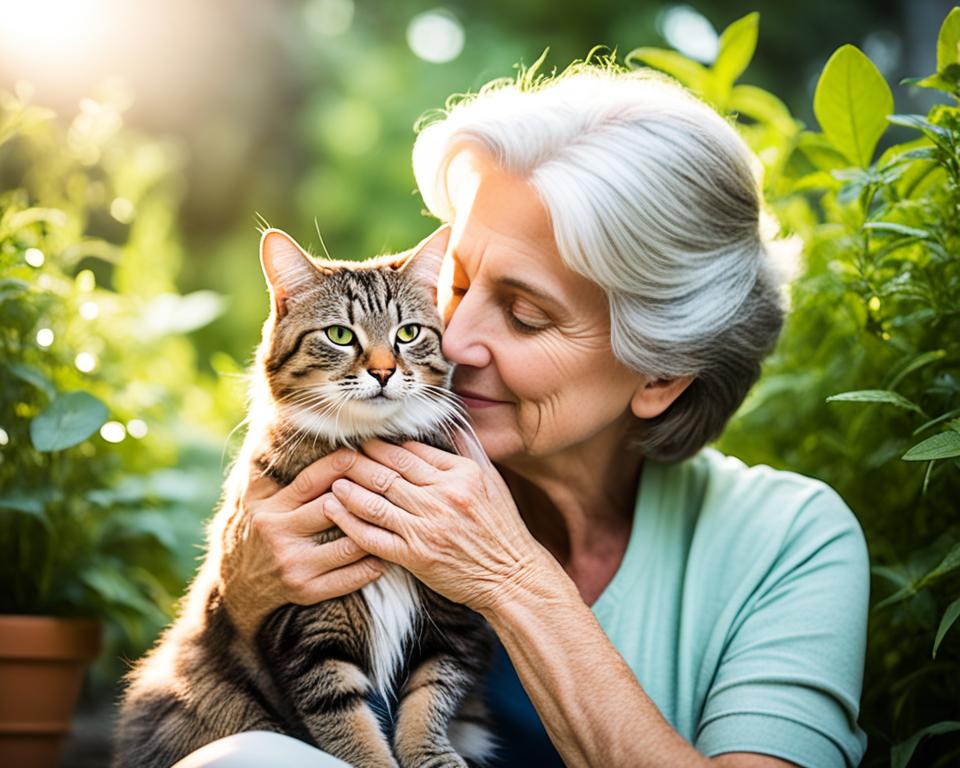
If behavioral changes persist or if there are any suspected health issues, it is always advisable to seek professional consultation. Keeping this in mind ensures that we are maintaining a positive cat environment while addressing any underlying concerns.
Best Practices to Avoid Grudge-holding Behavior in Cats
Creating a harmonious environment for your feline friend is crucial for preventing grudges and fostering healthy cat relationships. A stress-free living space, along with a deep understanding of your cat’s preferences and limits, goes a long way in achieving this goal.
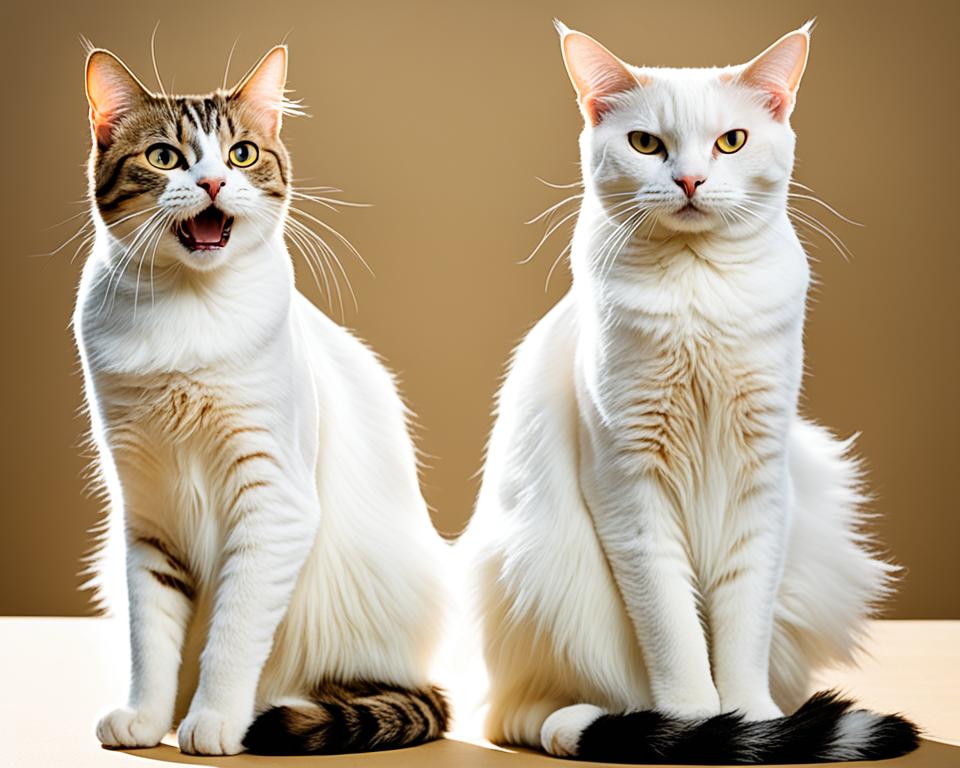
Creating a Positive Environment
A significant part of building positive cat relationships involves creating a positive environment that minimizes stressors. Keep their living area clean, provide plenty of spaces to explore and hide, and ensure they have access to fresh food and water. Enrich your cat’s life with toys and activities that cater to their instinctual behaviors, such as hunting, climbing, and scratching. A contented cat is less likely to harbor grudges and more likely to enjoy interacting with you.
Understanding Your Cat’s Preferences and Limits
Understanding your cat’s preferences and limits is essential in building a trusting and positive relationship. Each cat is unique, and respecting their individual boundaries can prevent feelings of resentment. Pay close attention to their body language and signals, which can reveal their likes and dislikes. Gentle and consistent interactions, along with providing personal space when needed, help reinforce positive associations and minimize any potential grudges.
By focusing on creating a positive environment and understanding feline behavior and preferences, you can build a more harmonious relationship with your cat, reducing the likelihood of grudge-holding behavior and fostering a peaceful coexistence.
Strengthening Your Relationship with Your Cat
Building a strong bond with your cat is a continuous journey that goes beyond providing basic needs. Understanding feline affection cues is pivotal in reinforcing positive interactions. Cats communicate their feelings through subtle body language signals, such as purring, slow blinking, and gentle headbutts. Recognizing and responding appropriately to these signs can help cement a trusting and affectionate relationship.
Consistent care is another cornerstone of solid cat relationships. Ensure regular feeding schedules, routine health check-ups, and maintaining a clean living environment. These actions not only fulfill their physical needs but also signal to your cat that they are safe and valued. Additionally, engaging in activities they enjoy, like interactive play or quiet cuddle sessions, can significantly enhance bond-strengthening with cats.
Adjusting your behavior to better align with your cat’s preferences can promote forgiveness and reduce any potential grudges. Patience and gentle handling go a long way in earning their trust. By investing time in understanding what makes your cat feel comfortable and happy, you create a positive atmosphere that fosters a resilient and loving relationship. This mindful approach to nurturing cat relationships ensures that both owner and pet experience mutual joy and companionship.
FAQs
How long does a cat hold a grudge?
Cats have a short-term memory span of around 16 hours, but traumatic events can impact their long-term memory and behavior for years. The duration of a grudge can depend on the individual cat’s temperament, past experiences, and breed characteristics.
What are the signs that a cat is angry?
Signs that a cat is angry include flattened ears, squishing tails, hissing, growling, swatting, and inappropriate elimination.
How do I understand my cat’s emotions and behavior?
Understanding a cat’s emotions involves being aware of their body language, vocal expressions, and behavioral changes. Recognizing these signs can help in addressing the underlying issues and preventing long-term resentment.
What is feline emotional memory?
Feline emotional memory refers to a cat’s ability to remember traumatic or pleasant experiences, which can influence their reactions and behavior towards similar situations in the future.
What are common triggers for cat anger?
Common triggers for cat anger include invading their space, changes in their environment, and past abuses. Recognizing and avoiding these triggers can help in managing their behavior.
How long does short-term and long-term memory last in cats?
A cat’s short-term memory lasts about 16 hours, while their long-term memory can last a lifetime depending on the significance of the event.
What factors influence the duration of a cat’s grudge?
Factors including the cat’s individual temperament, past experiences, and breed characteristics can influence the duration of a grudge.
How does a cat’s memory affect their grudges?
Unpleasant experiences can be etched into a cat’s long-term memory, which may influence their reactions and behavior towards previous offenders or situations. Understanding this helps in interpreting signs of a grudge and alleviating it.
What are the body language indicators of an angry cat?
Body language indicators of an angry cat include flattened ears, squishing tails, a stiff posture, and defensive positions.
What are the vocal signs of cat anger?
Vocal signs of cat anger include hissing, growling, and loud meowing.
What behavioral changes should I watch for to detect prolonged resentment in my cat?
Behavioral changes like hiding, reduced interaction, or increased aggression can indicate prolonged resentment in your cat.
How can I calm an upset cat?
Calming a distressed cat involves creating a serene environment, not forcing interactions, offering their preferred food, and providing them with space and time to approach on their terms. Engaging in soothing speech and play can also help rebuild trust.
What are the best practices to avoid grudge-holding behavior in cats?
Preventing grudge-holding in cats involves creating a stress-free living space, respecting their boundaries, providing opportunities for exercise and enrichment, and ensuring consistent and gentle interactions.
How can I create a positive environment for my cat?
Creating a positive environment for your cat includes providing a safe and comfortable living space, offering plenty of stimulation and enrichment, and addressing any stressors promptly.
How can I understand my cat’s preferences and limits?
Understanding your cat’s preferences and limits involves observing their behavior, recognizing their likes and dislikes, and respecting their boundaries.
How can I strengthen my relationship with my cat?
Strengthening your relationship with your cat involves recognizing and respecting their communication cues, providing consistent care, and engaging in activities they enjoy. Building a trusting bond reduces the likelihood of grudges and promotes a positive relationship.





